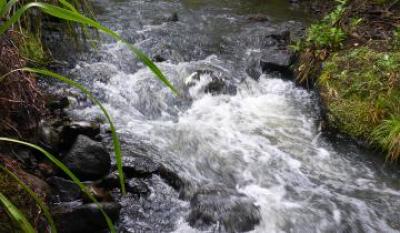Two reports released today by NIWA and the Ministry for the Environment on the technical background to the Clean Water proposals will help inform input into the plans to clean up New Zealand waterways, Environment Minister Dr Nick Smith says.
“The Clean Water plan is very ambitious in nationally grading our rivers and lakes for water quality for recreation and requiring 90 per cent to be swimmable by 2040. This has never been done before in New Zealand or overseas, but it is an important step in addressing our water quality issues.
“The grading system has generated significant debate and these reports provide more information on how the grading system compares internationally and the level of precaution they are based on.
“These reports show that the only other jurisdiction that attempts to grade waterways for swimming is Europe. Their grades of excellent, good and sufficient match the New Zealand grades of excellent, good and fair, although the New Zealand proposals for the bottom fair category are more cautious. This analysis shows that if New Zealand adopted the European grading, more rivers would be deemed swimmable.
“The report also notes that the USEPA criteria of waters either being swimmable or not is a bit more cautious, but notes that this has not been applied across all states in the US and requires a small sample size of four, rather than the 100 in the New Zealand proposal.
“These reports also provide more detailed information on the levels of risk from swimming in the different grades of rivers and lakes. The average infection risk when a person makes no assessment of the state of the waterway before swimming is rated at 1 per cent for the blue category, 2.4 per cent for the green category and 3.1 per cent for the yellow category. If a person follows the advice of not swimming during high flows, determined as three times normal flows, the risks drop to 0.3 per cent for blue, 1.3 per cent for green and 2.0 for yellow.
“These reports also confirm that the changes to the National Policy Statement in moving from a wadeable standard of a median 1000 E. coli/100ml to swimmable with a median of 130 E.coli/100ml for 90 per cent of waterways provides for a significant improvement in the microbiological water quality in our waterways.
“The gradings of waterways into different categories for swimmability inevitably involves choosing some arbitrary thresholds. The balance in setting these levels is to ensure we provide sufficient protection for people to swim safely while also ensuring we do not set a level that discourages people from enjoying the outdoors when the risks are low.
“I welcome further submissions from water quality scientists, and others with an interest, on the details of the gradings outlined in these additional reports by 25 May. We want to build wide support for the grading system to enable the focus to be on the significant task ahead in driving improvement.”
The reports can be seen at: https://niwa.co.nz/technical-background-report-swimmability and http://www.mfe.govt.nz/publications/fresh-water/swimming-categories-e-coli-clean-water-package
| A Beehive release || May 11, 2017 |||





